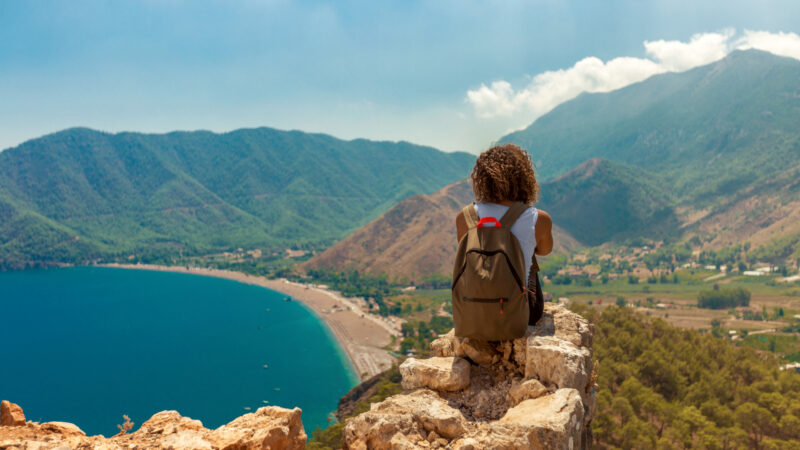Table of Contents Show
Many of America’s national parks provide guests with an unforgettable experience. Their natural beauty can cause visitors to overlook the potential dangers.
Unfortunately, deaths can and do occur in national parks. Even more shocking, they’re not nearly as uncommon as you’d think.
Today, we’ll look at the No. 1 cause of death in national parks. Don’t worry; we’ll share tips to help you and your loved ones stay safe exploring these magnificent spots.
What Are National Parks?
National parks are areas of land protected by the federal government to preserve their natural, cultural, and historical features and resources.
The plants and wildlife living within the boundaries also receive protection. While they’re often available for recreational purposes, the ultimate goal is conservation.
The United States currently has 63 designated national parks, with more than 420 individual National Park Service (NPS) units. They cover over 85 million acres and are within all 50 states, including the District of Columbia and U.S. territories.
If you want an epic and memorable adventure, any of the national parks make a great place to start. They’re full of opportunities for hiking, exploring, and enjoying the great outdoors. Many offer scenic drives, allowing you to experience their beauty without lacing up your hiking boots.
Are National Parks Dangerous?
Visiting national parks are relatively safe, but they do have some inherent dangers. Many visitors forget that these aren’t zoos or playgrounds.
The animals you see roaming throughout the areas are wild, and nothing stops them from getting to you. Additionally, the rugged surfaces are far from soft, so falls can result in severe injuries.
Officials create regulations to protect the park’s wildlife, resources, and visitors. Ignoring these rules increases the potential for danger.
However, guidelines and officials can only do so much. Individuals must understand the level of risk when visiting national parks.

How Many Deaths Occur in National Parks?
As mentioned, deaths occur in national parks more often than you’d think. According to the National Park Service, 990 deaths occurred in national parks from 2016 to 2019.
This equates to an average of roughly 330 deaths per year. They discovered that 143 of the 419 units experienced at least one or more deaths during the period studied.
Safety is critical, especially now that visitor numbers have risen again at many NPS units. Rangers take every opportunity to remind guests how to stay safe while adventuring. While it’s part of their job, they’d rather avoid rescuing individuals from dangerous situations if they can.
What Is the Most Common Cause of Death in National Parks?
The study conducted by NPS found that 53% of the deaths resulted from unintentional causes. These include accidents like motor vehicle crashes, slips and falls, and wildlife.
However, the most common cause of death in national parks is drowning. Researchers found that drowning made up 33% of the deaths in national parks.
Drownings don’t only occur because of an individual’s lack of swimming skills. Even the most advanced swimmers can experience a water accident by ignoring warning signs.
Hazardous conditions can make the waters unsafe for anyone. Swift currents can sweep individuals away, which can cause them to hit their heads on rocks.
Some individuals engage in risky behaviors like jumping from cliffs. Water depths and hidden obstacles can cause severe injuries and drownings. While we understand some like to push the limits, consider the risks first.
7 Tips for Staying Safe in National Parks
With more than 300 million guests exploring national parks each year, there’s a good chance you’re one of them. Here are seven tips to help you and others adventuring with you to stay safe.
Stay on Designated Trails
Yellowstone National Park has more than 900 miles of trails and covers approximately 2.2 million acres. If you’re not careful, you can very easily get lost, especially if you venture off the path. Cell phone service is nearly nonexistent in much of the park, so you may be unable to call for help.
One way to stay safe is by staying on the designated trails. If you stay on the path and get lost, you have a better chance that someone will find you. A fellow hiker may come along the way, or rangers will find your vehicle at the trailhead and know where to look.
Pro Tip: Stay safe while hiking and know these Hiking Safety Tips before you hit the trails. They could end up saving your life!

Carry Essential Safety Gear
Some of these areas are rough and rugged, and you can’t afford to explore unprepared. You may not plan on using them, but carrying essential safety gear is always a good idea. It will likely come in handy at some point.
The safety equipment that you bring will depend on the location. Bring items like navigational tools, a first-aid kit, a multi-tool, fire starters, a whistle, and a headlamp or flashlight. They may end up saving your life.
Be Aware of the Weather
Mother Nature can be an unpredictable force and can change with little notice. Weather conditions can make an already challenging and rugged environment even more dangerous. Extreme cold and heat can have deadly consequences, especially for those caught unprepared.
The weather conditions can significantly impact your trip. Consider the conditions when selecting your clothes, how much water to bring, and when to start. Remember that forecasts can change, and you should always prepare for the unexpected.
Keep Your Distance from Wildlife
We noted earlier that national parks are not zoos. When you see a bear, moose, or bison in the wild, remember they’re wild animals. They often tolerate visitors invading their homes. However, some guests who get too close will quickly discover that some creatures have a very short fuse.
While seeing wildlife in their natural habitat may feel exciting, resist the urge to get closer. You should maintain at least 100 yards from wildlife like bears and wolves. You’ll want to stay back at least 25 yards or more from bison, moose, and elk.
Invest in a quality pair of binoculars or a zoom lens for your camera to get a closer view. These beasts are faster than they appear. Additionally, know what to do if faced with an unexpected encounter. Hikers have accidentally run across cougars and bears on the trails.

Know Your Limits
While you may want to take some epic hikes, be mindful of your limits. You can’t set off on a 20-mile hike unprepared. Knowing your limits means sticking to the trails within your abilities.
One of the best examples is hiking down into the Grand Canyon. While the hike down to the bottom of the canyon is no walk in the park, the hike back up isn’t for the faint of heart.
Search teams complete 250 rescues each year as individuals discover that the 4,500 feet of elevation gain out of the canyon are more than they can chew. Don’t be one of them; know your limits and stick to them.
Stay Away from Swift or Deep Water
Water is a powerful force and can be very deceiving. Swift currents can knock you down and cause serious injuries. As we stated earlier, drowning is the most common cause of fatalities in national parks.
Additionally, bodies of water can be deeper than they appear. Just because they’re clear and you can see the bottom doesn’t mean it’s within reach. Crater Lake is one of the clearest lakes in the world and is almost 2,000 feet deep.
Even if you’re a strong swimmer, you must take water safety seriously. Wear lifejackets when possible and avoid dangerous rivers and streams.
Read More: Now that you know the causes of death in national parks, click to see which national parks are the deadliest.

Watch Your Step on Slippery Surfaces
It can still pose a risk even if you stay out of the water. Slippery rocks and surfaces near bodies of water can be dangerous. Rocks can shift, or you can slip while walking and fall into the water or onto the hard surface.
If you plan to be on or near slippery surfaces, wear proper footwear. You want something that will give you good support, traction, and protection. A pair of flip-flops or cheap sandals likely won’t do the job.
Don’t Lose Your Life While Visiting National Parks
National parks can be an excellent place for making memories. However, there are some serious risks that you can’t overlook. Take safety seriously and step in when other guests take risks they shouldn’t.
Unfortunately, you can’t help everyone. Some people don’t know any better, and others ignore the dangers. So follow our tips and improve the odds of exploring in the future.






